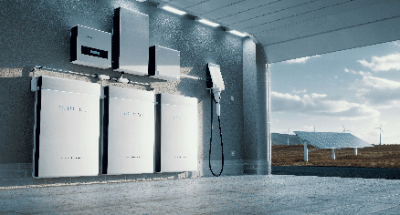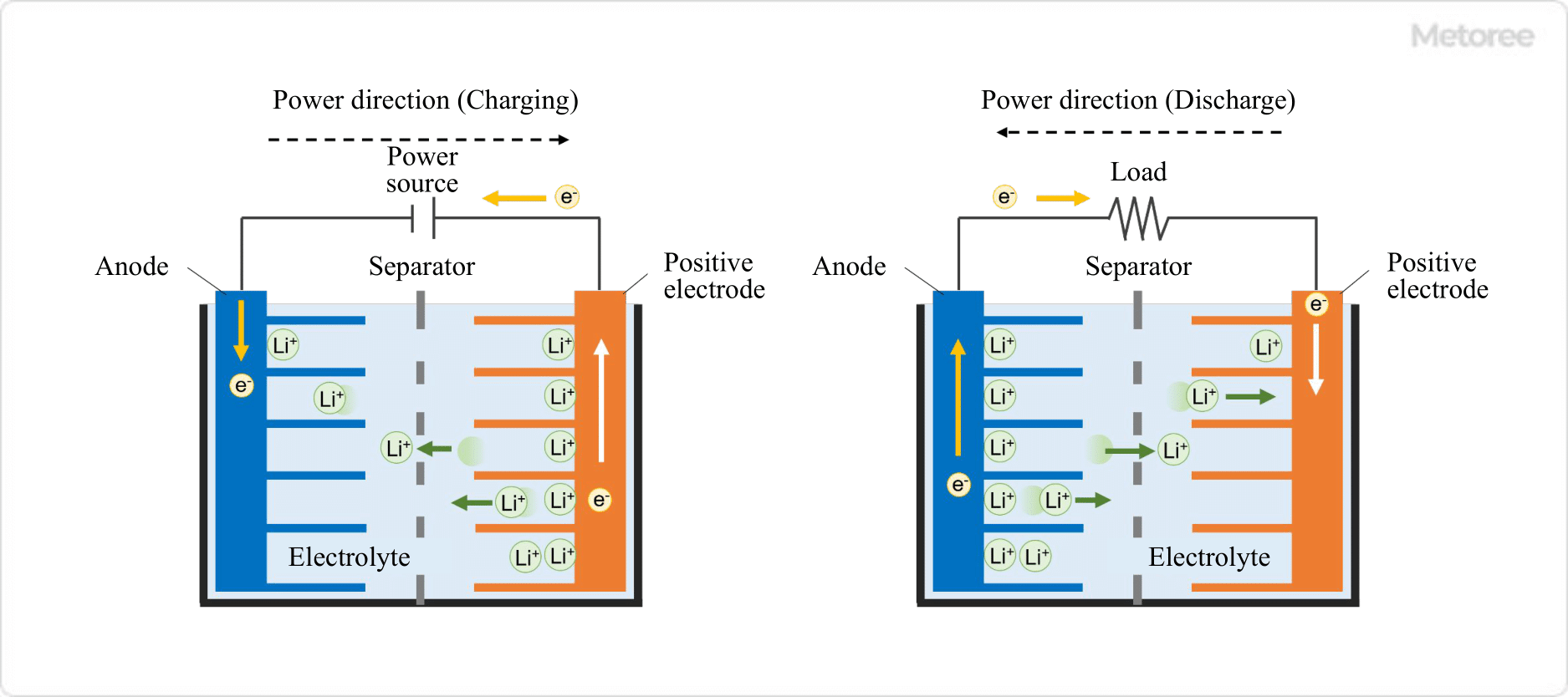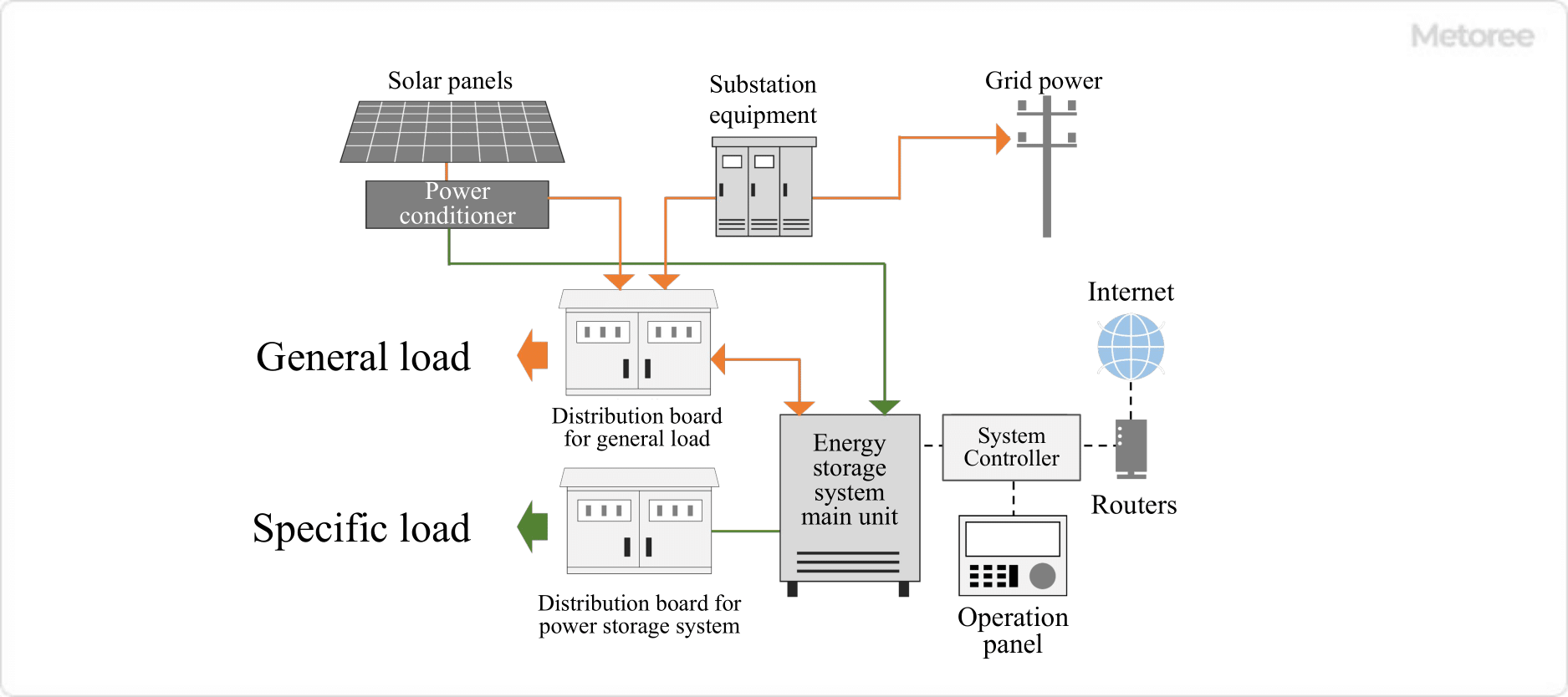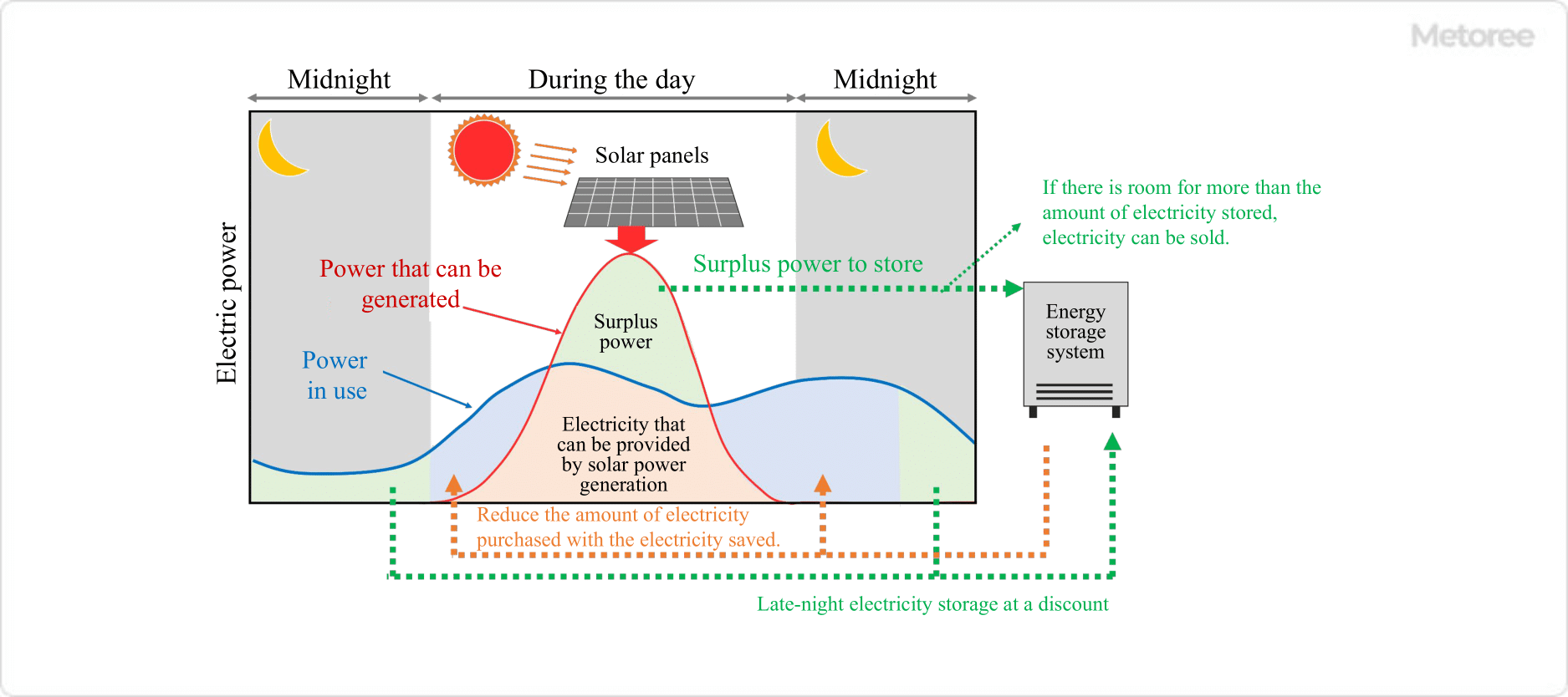What Is a Lithium-Ion Energy Storage System?
 A lithium-ion energy storage systems are system uses lithium-ion storage batteries to stabilize power demand and supply power during power outages.
A lithium-ion energy storage systems are system uses lithium-ion storage batteries to stabilize power demand and supply power during power outages.
By storing electricity distributed by the power company or generated in-house in conjunction with a solar power generation system in the main body of the lithium-ion energy storage system during normal times, it is possible to curb power purchases during times of high power consumption and supply electricity in emergency situations such as power outages due to disasters.
Uses of Lithium-Ion Energy Storage Systems
Lithium-ion energy storage systems are used in a wide range of applications, from homes to businesses. In many cases, they are incorporated in homes in combination with solar power generation systems. Demand for energy storage systems is further increasing against the backdrop of the desire to store electricity produced at home, as the system requiring the purchase of surplus home-generated electricity will end in 2019.
In addition to daily electricity use, the ability to use stored electricity in the event of power outages or other power outages is also increasing demand from the perspective of disaster preparedness. Many companies are adopting these systems for use in business continuity measures.
A disaster or system failure that makes it difficult to continue business due to inadequate power supply can cause significant damage to a company, so energy storage systems are indispensable for preventing this from happening. For example, they are used for servers that cannot be shut down 24 hours a day, lighting in large buildings, etc., and large-capacity energy storage systems are also available to meet the needs of businesses.
Principle of Lithium-Ion Energy Storage Systems
A storage battery is a battery that can discharge and store electricity using a chemical reaction. Charging is possible by passing an electric current in the opposite direction of the discharge.
Lithium-ion batteries use lithium transition metal oxides and carbon materials for the cathode and cathode, respectively, and a separator made mainly of non-fiber and an organic solvent called electrolyte between the positive and negative electrodes.
Unlike conventional storage batteries, lithium-ion batteries have a layered structure of cathode and anode materials, and lithium ions can be stored in the gaps between them.

Lithium-ion energy storage systems are widely used because of their superior cycle life, temperature characteristics, output and charge performance, and capacity per volume compared to conventional storage batteries.
Lithium-ion energy storage systems are often used in combination with solar power generation. The electricity to be stored is either normal grid electricity or electricity generated by solar power. In general, the system is divided into two categories: general loads that are supplied with electricity from the normal distribution panel, and specific loads that can be supplied with electricity from the energy storage system in an emergency.
During normal daytime hours, the use of grid electricity can be reduced due to the availability of electricity from solar power generation. Surpluses can be used to store electricity or sold as needed. At night, in addition to grid power, power can be supplied from the energy storage system when usage is high. During times of low power consumption and low electricity prices, such as late at night, the energy storage system is charged.
In the event of a power outage, electricity can be used in an emergency by supplying power from the solar power generation and energy storage system during the daytime and from the energy storage system during the nighttime. In the event of a blackout, power will be supplied to specific loads.
In addition, by connecting the energy storage system to the network, it is possible to manage the status of the energy storage system remotely from a PC or other device, and to manage the use of electricity using an energy management system (EMS).

Other Information on Lithium-Ion Energy Storage Systems
1. Advantages of Lithium-Ion Energy Storage System
The advantages of installing a lithium-ion energy storage system are that it can be used as an emergency power source in the event of a power outage, and that it saves energy and costs by using it in combination with solar power generation and by flattening power peaks.
As explained in the principle of emergency power supply, electricity can be used in an emergency by storing power in the energy storage system. To explain the energy and cost saving effects in more detail, the amount of electricity purchased is reduced by using electricity generated by solar power during the daytime.
In addition, surplus electricity can be charged to an energy storage system or sold. In addition, since electricity rates are generally lower during periods of low electricity use, such as late at night, electricity can be recharged during these times. By using the electricity stored during peak daytime hours, electricity usage peaks can be flattened and electricity rates can be reduced.

2. Points to Note About Lithium-Ion Energy Storage System
There are a few things to keep in mind when using Lithium-ion energy storage systems.
Degradation of Lithium-Ion Batteries
Although lithium-ion battery storage batteries can be used repeatedly, the capacity of the storage battery itself deteriorates as it is used over and over again. Generally, the life of a storage battery is measured by the number of cycles, which represents the number of times the battery can be cycled from recharging to discharging. For example, if you check the number of cycles for each company, such as 5,000 cycles, you will be able to grasp the product specifications.
Capacity Stored in Storage Batteries
The capacity of electricity that can be stored in storage batteries is fixed and is expressed in kWh (kilowatt-hours). The larger the capacity, the higher the price of the Lithium-ion energy storage system itself, so it is necessary to decide on the capacity after considering the amount of electricity required during a power outage and the amount of electricity used on a daily basis.
Types of Lithium-Ion Energy Storage Systems
Lithium-ion energy storage systems are classified into two types depending on where they are installed: the large “stationary type” for outdoor installation and the “outlet type” that can be installed indoors. The outdoor type is particularly large, so it is necessary to consider the space in which it will be installed.